|
INTRODUCTION
SCOPE & STYLE
The Research Happy Hour (RHH) series of talks and discussions explores breakthrough discoveries, cutting-edge research methods, novel developments, and interesting perspectives: ideas that might inspire research projects.
The meetings have an informal style and aim at 50% time for discussion. Typically, speakers take questions during the presentation, and the host moderates the discussion. This format has been very successful, engaging, and inspiring for the participants. It allows us to gain insights beyond traditional talks. Some people may know this format as the style of the legendary flow-volume-underworld meetings.
Organized and hosted by: Tilo Winkler & Zhongcong Xie
|
|
|
UPCOMING
TALKS & DISCUSSIONS
|
|
|

|
Coming Soon
We are preparing the schedule for the next events after a short break. Please check back.
|
|
PREVIOUS
TALKS & DISCUSSIONS
|
|
|
Monday, January 27, 2025, 11:00 AM – 12:00 PM EDT
|

|
Long-Jun Wu, Ph.D.
C. Harold and Lorine G. Wallace Distinguished University Chair, Professor and Founding Director, IMM-Center for Neuroimmunology and Glial Biology, University of Texas Health Science Center at Houston
Microglia Sense and Regulate Neuronal Activity in Anesthesia
Microglia are resident immune cells of the central nervous system (CNS) and play key roles in brain homeostasis. Using in vivo two-photon imaging in awake/anesthesia mice, we found that microglia increase their dynamic process surveillance and interact more closely with neurons through reduced norepinephrine signaling during anesthesia. We further demonstrate that microglia enhance neuronal activity by shielding GABAergic inputs after the cessation of general anesthesia. Our studies reported a previously unappreciated function of microglial in regulation of neuronal activity in anesthesia.
|
|
|
Wednesday, November 20, 2024, 5:30 PM – 6:30 PM EST
|
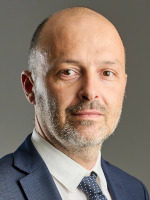
|
David Lagier, M.D., Ph.D.
Professor of Anesthesia and Critical Care Medicine, Aix Marseille University, France
Local Biomechanical Determinants of Respiratory System Driving Pressure
Driving pressure in the respiratory system is a strong predictor of outcomes during mechanical ventilation in both surgical and ARDS patients. However, the local biomechanics associated with driving pressure and the ventilatory strategies designed to optimize this global measurement are not well understood. The presentation will show how a large animal model of lung injury, combined with 4D computed tomography, has helped us identify voxel-wise pulmonary factors that contribute to increased driving pressure and potentially adverse clinical outcomes (Lagier D et al. Sci Transl Med. 2024. https://doi.org/gt7dvq).
|
|
|
Wednesday, April 17, 2024, 5:30 PM – 6:30 PM EDT
|

|
David W. Kaczka, M.D., Ph.D.
Gilbert E. Kinyon Professor, Departments of Anesthesia, Biomedical Engineering, and Radiology, University of Iowa, Iowa City, Iowa
Mechanical Ventilation of the Injured Lung: A Quantitative CT Imaging Assessment
Conventional strategies for protective mechanical ventilation in injured lungs rely on positive end-expiratory pressure to limit derecruitment and low tidal volumes or driving pressures to limit overdistention. In injured lungs, it has been demonstrated that using multiple superimposed frequencies, termed “multi-frequency ventilation” (MFV), results in a more even ventilation distribution consistent with regional mechanical properties. In this presentation, Dr. Kaczka will discuss the theoretical rationale for using MFV in structurally heterogeneous acute lung injury and demonstrate the mechanisms by which MFV improves regional ventilation distribution, aeration, and lung parenchymal strain. The assessments are based on dynamic xenon-enhanced computed tomographic imaging and four-dimensional image registration. These pre-clinical studies of MFV may establish the foundation for further explorations of novel ventilation modalities in a broad range of patients with acute respiratory failure.
|
|
|
Wednesday, February 28, 2024, 5:30 PM – 6:30 PM EST
|

|
Jesse D. Roberts Jr., M.D. M.S.
Associate Professor of Anaesthesia at Harvard Medical School, Pediatric Anesthesiologist and Associate Anesthetist at Massachusetts General Hospital (MGH), DACCPM, Principal Investigator, MGH Cardiovascular Research Center, Scientist in MGH Dept of Medicine, Division of Cardiology
Targeting transforming growth factor-beta (TGFb) to protect the development of the injured newborn lung
Many forms of injury to the newborn lung can cause abnormal extracellular matrix assembly, dysplastic alveolar formation, and derail normal vascular development. These processes lead to pulmonary airway and vascular disease, and to death or life-long disability. Although studies in relevant newborn animal models suggest that several mediators might play a role in the evolution of this disease, few exhibit the potential for specific therapeutic targeting and in vivo assessment. In this talk, I will present our work indicating that TGFb is activated in the injured mouse pup lung, how targeting it with neutralizing antibodies protects pulmonary development, and how our new insights into pathogenic TGFb mechanisms in the newborn lung allow us to develop a molecular probe that can detect its activity in vivo.
|
|
|
Wednesday, January 24, 2024, 5:30 PM – 6:30 PM EST
|

|
Chantal Darquenne, Ph.D.
Professor of Medicine, Division of Pulmonary, Critical Care and Sleep Medicine at the University of California, San Diego
Pulmonary aerosol deposition in health and disease: insights from in-silico modeling
The lungs are a prime target for airborne particulate matter exposure and for the delivery of drugs to treat respiratory disorders such as asthma and COPD. The therapeutic and/or adverse health effects of aerosols not only depend upon the characteristics of the particles being inhaled but also upon the site and extent of deposition in the respiratory tract. This talk will review the main mechanistic and physiological factors affecting the transport and deposition of inhaled aerosols in the human lung, discuss recent efforts in the development of in-silico models of aerosol dosimetry, and highlight how these models can provide additional insights into the potential health hazard of airborne particulate matter and/or in the design and development of new inhaled drugs.
|
|
|
Wednesday, December 20, 2023, 5:30 PM – 6:30 PM EST
|

|
Shiqian Shen, M.D.
Associate Professor of Anaesthesia at Harvard Medical School, and Assistant Anesthetist at Massachusetts General Hospital, DACCPM
Addressing Reviewers' Comments for NIH grant resubmission
Improving a grant proposal based on reviewers' comments is a crucial step in the resubmission process. We will discuss how to get the most out of the reviewers' comments and to make changes that will improve our chance of getting funded.
|
|
|
Wednesday, November 8, 2023, 5:30 PM – 6:30 PM EST
|

|
Ti-fei Yuan, Ph.D.
Professor at Brain Health Institute, National Center for Mental Disorders, Shanghai Mental Health Center, Shanghai, China
Cortical plasticity in drug action and addiction
The talk is on action of drug on brain network and plasticity. We provide examples to measure the human brain non-invasively in clinical friendly manner, and we also share potentials to modulate brain network functioning in the future. We conclude that targeting human cortex is feasible and critical for disease diagnosis and treatment.
|
|
|
Wednesday, October 25, 2023, 5:30 PM – 6:30 PM EDT
|
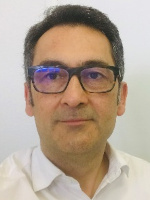
|
Sam Bayat, M.D., Ph.D.
Professor, Department of Clinical Physiology, Sleep and Exercise, Grenoble University Hospital, Grenoble, France, and Director, Synchrotron Radiation for Biomedicine (STROBE), Université Grenoble Alpes, Inserm UA07
Insights from synchrotron micro-CT imaging in models of ventilator-induced lung injury
Mechanical ventilation can damage the lungs, a condition called Ventilator-Induced Lung Injury (VILI). The mechanisms leading to VILI at the microscopic scale remain poorly understood. Investigating the lung and airway biomechanical behavior requires high spatial and temporal resolution imaging techniques. This talk will describe the synchrotron micro-CT imaging technique and discuss the findings and insight in lung airway and parenchymal biomechanics in animal models of VILI.
|
|
|
Wednesday, June 28, 2023, 5:30 PM – 6:30 PM EDT
|

|
Binglan Yu1, Ph.D., and
Yuanlin Dong2, M.D., M.S.
1 Assistant Professor of Anesthesia, Harvard Medical School, and Assistant Investigator at Massachusetts General Hospital, DACCPM, Boston, MA
2 Research Fellow in Anaesthesia, Harvard Medical School, and Instructor in Investigation at Massachusetts General Hospital, DACCPM, Boston, MA
The better way to write animal protocols and address the comments
Animal research is critical to successfully bridging innovative science with state-of-the-art clinical medicine—effectively advancing the discoveries made at the laboratory bench to patient care. This lecture will cover the general principles and policies in the application of the animal protocol and provide essential insights into the process and strategies to effectively address comments received during the review process, all with the goal of improving the application process for animal protocols in basic and translational research.
|
|
|
Wednesday, May 31, 2023, 5:30 PM – 6:30 PM EDT
|

|
Cindy Thamrin, Ph.D.
Honorary Affiliate, Woolcock Institute of Medical Research and Adjunct Associate Professor, School of Medical Sciences, University of Sydney
Can we monitor lung disease at home? Prediction of clinical outcomes from home telemonitoring of lung function in asthma and COPD
There is increasing motivation to monitor lung disease at home, coupled with significant advances in telemonitoring technology in recent years. Despite this, home telemonitoring is still challenged by a lack of measures that are both practically feasible and clinically meaningful. This talk will examine the use of oscillometry, an emerging clinical test of lung function, and analytics of oscillometry data, to assess current disease status and predict future risk of deterioration.
|
|
|
Wednesday, March 29, 2023, 5:30 PM – 6:30 PM EDT
|

|
Sean B. Fain, Ph.D.
Professor and Vice Chair for Research in Radiology, Department of Radiology, Carver College of Medicine, University of Iowa, Iowa City, IA
Insights from Pulmonary MRI and CT Imaging in Asthma
Asthma is characterized by lung remodeling and ventilation heterogeneity that can be visualized using CT and MRI techniques. Inflammatory phenotypes and targets for therapy in asthma highlight the need for surrogate biomarkers of asthma exacerbation and treatment response. Both quantitative CT and functional imaging with hyperpolarized gas MRI can improve understanding of individual patient progression and likelihood of exacerbation. This presentation will review these techniques and related clinical studies from the severe asthma research program with discussion of asthma pathophysiology and clinical utility of candidate imaging biomarkers.
|
|
|
Wednesday, January 25, 2023, 5:30 PM – 6:30 PM EST
|
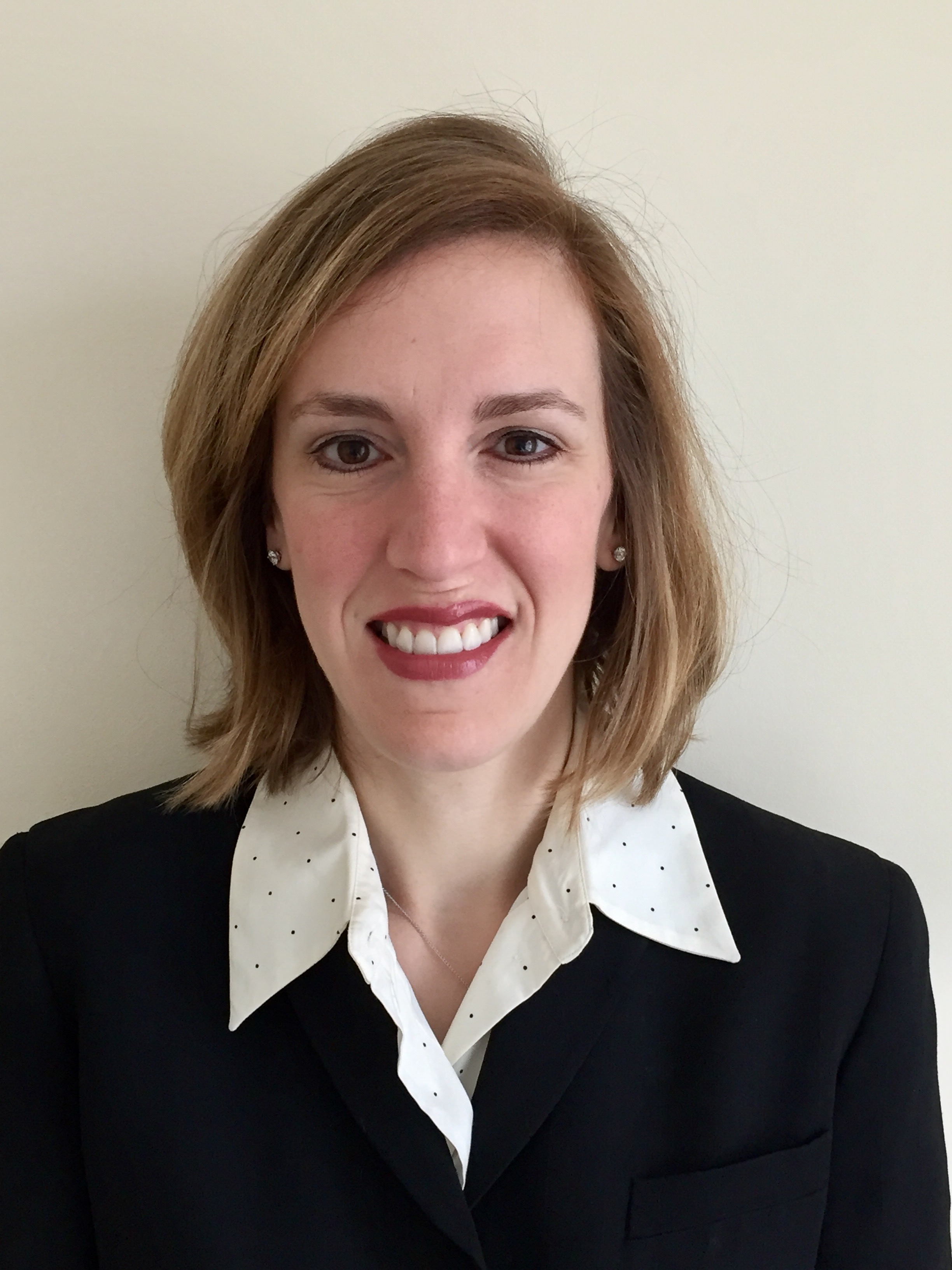
|
Sydney Montesi, M.D.
Massachusetts General Hospital, Department of Medicine, Pulmonary & Critical Care Medicine, Boston, MA
Molecular PET Imaging of Pulmonary Fibrosis
Early detection of fibrotic disease, confirmation of target expression, and assessment of treatment responses are highly relevant topics for pulmonary fibrosis. However, molecular imaging, with a high potential for advances in addressing these challenges, remains underutilized. This talk will review concepts around molecular imaging and highlight the development of several probes to assess targets or molecules implicated in the development of fibrosis. Additionally, this talk will discuss the application of molecular imaging to pulmonary fibrosis to assess disease activity and treatment effects.
|
|
|
Wednesday, November 2, 2022, 5:30 PM – 6:30 PM EDT
|

|
Adam Hines, B.Med.Sci.
Queensland Brain Institute, The University of Queensland, Australia & Dept. of Anesthesiology and Critical Care, University of Pennsylvania, PA
A synapse-specific mechanism of general anesthesia disrupts excitatory neurotransmission
General anesthetics disrupt many neural pathways through specific protein interactions at both the pre- and post-synapse. Ultimately, these disruptions reduce neuronal communication and the brain's capacity to process information. We find and explore a specific protein interaction in excitatory neurons of Drosophila fruit flies that drives a pre-synaptic mechanism of general anesthesia.
|
|
|
Wednesday, September 28, 2022, 5:30 PM – 6:30 PM EDT
|
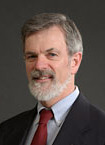
|
Keith Miller, Ph.D.
Mallinckrodt Professor of Pharmacology in the Department of Anaesthesia, Critical Care and Pain Medicine, Massachusetts General Hospital, Boston, MA
The GABA(A) receptor family; well behaved synaptic receptors, and unruly extra-synaptic receptors
GABA(A) receptors are the site of action of general anesthetics. They have five subunits arranged symmetrically around an ion conducting channel. There are 19 subunits, so many arrangements are possible. Anesthetics bind between specific pairs of subunits, so we expect them to act differently on different members of the GABA(A)R family. Thus, establishing which arrangements exist is important (Sente A, et al. Nature 2022, https://doi.org/jbf6).
|
|
|
Thursday, July 14, 2022, 5:30 PM – 6:30 PM EDT
|

|
Yu (Woody) Lin, Ph.D.
Program Director and Physician Scientist, Division of Neuroscience and Behavior, National Institute on Drug Abuse, National Institutes of Health/ HHS
Winning the competition to secure NIH grant -- A program officer's words of wisdom
Dr. Lin is a NIDA Program Official and a member of the institute’s Research Training Committee and K99/R00 Program Committee. His program portfolio oversees training/mentoring awards and neuroscience research projects.
|
|
|
Wednesday, May 11, 2022, 5:30 PM – 6:30 PM EDT
|

|
Yongjie Yang, Ph.D.
Professor in the Department of Neuroscience at Tufts University School of Medicine, Boston, MA
Cell-type specific exosome signaling in neurodegenerative diseases
Altered glia to neuron signaling significantly impact pathological development in neurodegenerative diseases. Intercellular exosome signaling emerges as a new pathway that has been implicated in different neurodegenerative diseases. In this seminar, I will be talking about our efforts in understanding exosome-dependent neuron to glia signaling and how cell-type specific exosome signaling is differentially involved in neurodegenerative diseases.
|
|
|
Wednesday, April 27, 2022, 5:30 PM – 6:30 PM EDT
|

|
Eduardo L. V. Costa, M.D.
Pulmonary and Critical Care Physician and Professor at the University of Sao Paulo School of Medicine, Sao Paulo, Brazil
How can we avoid ventilator-induced lung injury (VILI) during mechanical ventilation?
High tidal volumes and high driving pressures are two accepted causes of harm to the lungs. The frequency at which these harmful ventilatory settings are applied likely matters as well and mechanical power was proposed as a variable that lumps together these potential causes of VILI. The idea of the meeting is to discuss what components are in fact associated with harm.
|
|
|
Wednesday, February 23, 2022, 5:15 PM – 6:15 PM EDT
|

|
Bindi S Brook, Ph.D.
Associate Professor at University of Nottingham, UK, Director of the Centre for Mathematical Medicine and Biology, and chair of BIOREME, a newly launched EPSRC-funded Network+ research project
Understanding airway contraction and remodeling in asthma -- data-driven modeling in respiratory medicine
Dr. Brook will start by introducing an exciting new EPSRC-funded network entitled “Integrating data-driven biophysical models into respiratory medicine”. The aim of this network is to catalyze new partnerships linking researchers in academia, medicine, industry, and charity who are interested in the applications of mathematical modeling to lung health and respiratory medicine. Dr. Brook will give some examples of related work her group has been doing to explore the role of tissue mechanics in bronchoconstriction and airway remodeling in asthma.
|
|
|
Wednesday, January 19, 2022, 5:30 PM – 6:30 PM EDT
|

|
Xinzhong Dong, Ph.D.
Professor of Neuroscience and Neurosurgery, Johns Hopkins University & Investigator, Howard Hughes Medical Institute
Revealing pain mechanisms by in vivo DRG imaging
Xinzhong Dong has made original contributions in identifying a novel family of G protein-coupled receptors (GPCRs) in mice called Mrgprs that are important in mediating itch and pain. He has provided key mechanistic insights into how these receptors are expressed, regulated, and more importantly, implicated in disease processes including pseudo-allergic reactions, itch, and pain. He is a professor at the Johns Hopkins University and an Investigator at the Howard Hughes Medical Institute, and has published extensively on Cell, Nature, Nature Neuroscience, Immunity, Neuron, etc.
|
|
|
Wednesday, October 27, 2021, 5:00 PM - 6:00 PM EDT
|
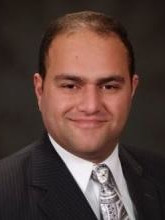
|
Farbod Nicholas Rahaghi, M.D., Ph.D.
Assistant Professor in Medicine at Brigham and Women’s Hospital
Quantifying and visualizing the pulmonary vasculature with CT imaging
We will discuss visualization and quantification of the pulmonary vasculature using clinical CT scans, including mapping changes in response to nitric oxide and catheter-based lysis of pulmonary emboli. We will also discuss changes observed in pulmonary arterial hypertension and exercise-pulmonary hypertension, as well as those in pulmonary embolus and chronic thromboembolic disease.
|
|
|
Wednesday, September 29, 2021, 5:30 PM - 6:30 PM EDT
|

|
Shujia Zhu, Ph.D.
Principal Investigator, Institute of Neuroscience, State Key Laboratory of Neuroscience, CAS Center for Excellence in Brain Science and Intelligence Technology, Chinese Academy of Sciences, Shanghai 200031, China
Molecular basis of ketamine action on human NMDA receptors
Ketamine is a non-competitive channel blocker of N-Methyl-D-Aspartate (NMDA) receptor. A single sub-anesthetic dose of ketamine produces rapid (within hours) and long-lasting antidepressant effects in patients who are resistant to conventional antidepressants, which is arguably the most striking breakthrough in the field of depression. We resolved the cryo-EM structures of human GluN1-GluN2A and GluN1-GluN2B NMDA receptors in complex with ketamine. Both electron density maps uncovered the binding pocket for ketamine in the central vestibule between the channel gate and selectivity filter. Molecular dynamics simulation revealed that ketamine displays motions between two distinct locations within the binding pocket. Moreover, two amino acids, Leu642 on GluN2A (homologous Leu643 on GluN2B) and Asn616 on GluN1, were identified as key residues forming hydrophobic and hydrogen-bond interactions with ketamine, and mutations at these identified residues led to the reduced potency of ketamine in blocking the NMDA receptor channel activity. These findings provide the structural basis of ketamine binding and action on human NMDA receptors, and pave the way for future development of ketamine-based antidepressants.
|
|
|
Wednesday, June 23, 2021, 5:00 PM – 6:00 PM EDT
|

|
Aranya Bagchi, M.B.B.S.
Assistant Professor of Anaesthesia, Harvard Medical School; Staff Anesthesiologist/Intensivist, MGH DACCPM, Boston, MA
The role of iron homeostasis in driving neurologic outcomes after cardiac arrest
Cardiac arrest is a highly lethal condition that affects more than 300,000 adults each year in the United States, with a mortality of more than 60%. Among survivors to hospital admission the majority suffer brain injury, for which there is no pharmacologic treatment. We hypothesize that a strong inflammatory response after resuscitation from cardiac arrest increases production of the master iron regulating hormone hepcidin, which causes an accumulation of iron within neurons, activating an iron-dependent programmed cell death mechanism known as ferroptosis. In this talk, I will present data supporting our hypothesis, while emphasizing areas of uncertainty. In the long term, development of therapies to minimize neurologic dysfunction in patients resuscitated from cardiac arrest have the potential to have a significant impact on the medical management of post-cardiac arrest patients, with the likelihood of positively influencing patient outcomes.
|
|
|
Wednesday, May 26, 2021, 5:00 PM – 6:00 PM EDT
|

|
Guang Yang, Ph.D.
Associate Professor, Dept. of Anesthesiology, Columbia University
In vivo studies of neural circuit plasticity in chronic pain
Dr. Yang’s research aims to elucidate the mechanisms of surgery-induced chronic pain and cognitive dysfunction at the synaptic, cellular and circuit levels. Her lab uses a variety of techniques, including in vivo two-photon imaging, opto- and chemo-genetics, and virus-mediated circuit tracing. Currently her lab is studying the plasticity of the somatosensory system during the transition from acute to chronic pain.
|
|
|
Wednesday, April 14, 2021, 5:00 PM – 6:00 PM EDT
|

|
Binglan Yu, Ph.D.
Assistant Professor of Anesthesia, Harvard Medical School; Assistant Investigator at Massachusetts General Hospital, DACCPM, Boston, MA
Development of a nitric oxide generator that can produce pure nitric oxide from air using pulsed electrical discharges
Inhaled nitric oxide (NO) produces selective pulmonary vasodilation without reducing systemic vascular resistance or systemic arterial pressure. However, the high cost of providing NO and its complex cylinder delivery system limit this life-saving inhaled NO therapy for in-hospital use to well-equipped medical centers in developed countries. This talk introduces the design and development of electrical generation of NO from air using pulsed electrical discharges, describes the studies of efficacy of electric NO in vasodilating pulmonary vasculature of large animal model and human volunteers, and discusses the potential applications of electric NO in treating a broad spectrum of diseases.
|
|
|
Wednesday, October 30, 2019, 5:00 PM – 6:00 PM EDT
|
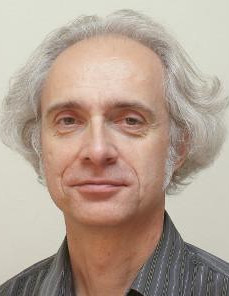
|
Tilo Winkler, Ph.D.
Assistant Professor of Anesthesia, Harvard Medical School; Assistant Investigator at Massachusetts General Hospital, DACCPM, Boston, MA
Now I see it -- Principles of scientific data visualization
Data visualization has become ubiquitous in science and daily life. However, a better understanding of the principles of scientific data visualization could, in most cases, significantly improve the clarity and transparency of the data. The talk will focus on principles of visual perception and graphic design everyone should know to develop effective visualizations of scientific or clinical data. The talk will include a brief history of data visualization, many examples, and a critical discussion of the pros and cons of different visualization types and the design choices for clarification. It will also cover some aspects of Edward Tufte's famous publications.
|
|
|
Monday, September 23, 2019 5:00 PM – 6:00 PM EDT
|

|
Huajun Feng, Ph.D. (MGH) & Shaomin Li, M.D., Ph.D. (BWH)
Assistant Professor of Anesthesia, Harvard Medical School; Assistant Investigator at Massachusetts General Hospital, DACCPM (MGH) & Assistant Professor of Neurology, Harvard Medical School; Assistant Investigator at Brigham and Women's Hospital (BWH)
The application of electrophysiology in anesthesia research
Dr. Feng will discuss the in vitro part and Dr. Li will discuss the in vivo part and MEA, the new technology.
|
|
|
Wednesday, June 19, 2019, 5:15 PM – 6:15 PM EDT
|

|
Douglas Richardson, Ph.D.
Director of Imaging at the Harvard Center for Biological Imaging
Advances in cleared tissue imaging
Biological specimens are intrinsically three dimensional; however, because of the obscuring effects of light scatter, imaging deep into a tissue volume is problematic. Although efforts to eliminate the scatter by “clearing” the tissue have been ongoing for over a century, there have been a large number of recent innovations. This talk introduces the physical basis for light scatter in tissue, describes the mechanisms underlying various clearing techniques, and discusses several of the major advances in light microscopy for imaging cleared tissue.
|
|
|
Wednesday, May 1, 2019 at 5:15 PM - 6:15 PM EDT
|

|
Keith Miller, Ph.D.
Mallinckrodt Professor of Pharmacology, Harvard Medical School; Investigator at Massachusetts General Hospital, DACCPM, Boston, MA
Multiple specific general anesthetic sites on GABA(A) receptors -- what are the clinical implications?
Over the last decade a fairly detailed picture has emerged concerning the molecular mechanisms of action of general anesthetics on synaptic GABA(A)Rs. These receptors are the major inhibitory ligand-gated ion channels in the CNS, and general anesthetics enhance the action of GABA on them leading to anesthesia. The GABA(A)R is a large protein with five separate subunits. We now know that a given intravenous anesthetic binds to one of three classes of binding site depending on its chemical structure. Etomidate, pentobarbital and alphaxalone thus bind to different sites. More recently it has become apparent, that these three sites talk to each other. These so–called allosteric interactions have interesting implications for clinical practice, which we will explore.
|
|
|
Wednesday, April 3, 2019, 5:15 PM - 6:15 PM EDT
|

|
Christa Nehs, Ph.D.
Assistant Professor of Anaesthesia, Harvard Medical School; Assistant Investigator at Massachusetts General Hospital, DACCPM, Boston, MA
Optogenetic and DREADD manipulation of neural circuits in anesthesia
Optogenetics and DREADDs are useful tools to selectively manipulate brain circuits. This talk will give an overview of each technique including pros and cons and then review the literature that has used these techniques to investigate sleep and anesthesia regulation.
|
|
|
Wednesday, January 23, 2019, 5:15PM – 6:15PM EDT
|

|
Tilo Winkler, Ph.D.
Assistant Professor of Anesthesia, Harvard Medical School; Assistant Investigator at Massachusetts General Hospital, DACCPM, Boston, MA
Bronchoconstriction in asthma and why "More is different"
Bronchoconstriction is an essential feature of asthma attacks. Ex vivo stimulation of airway smooth muscle leads to the constriction of an airway. However, ventilation imaging during bronchoconstriction shows regional impairments of ventilation, referred to as ventilation defects (VDefs), which is strong evidence for major regional differences in bronchoconstriction. How is this contradiction possible? Why does the behavior of individual elements of a larger system, such as individual airways, not explain phenomena such as VDefs in the whole system? The fundamental reason is that emergent phenomena result from interactions among the elements of a complex system, and feedback mechanisms can lead to differentiation and the emergence of heterogeneity. The Nobel laureate Philip Anderson emphasized in a Science paper entitled "More is different" that extrapolation from the behavior of an element to the whole system fails in complex systems, and this applies to airway behavior in asthma, phase separation in cell signaling, the emergence of life, as well as other phenomena of complex systems.
|
|
|
|
|
|